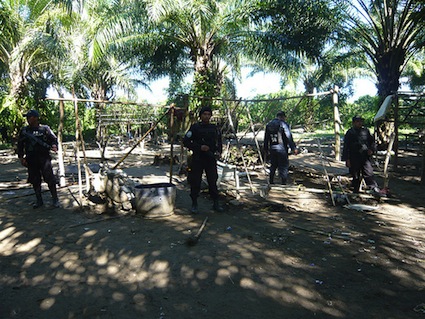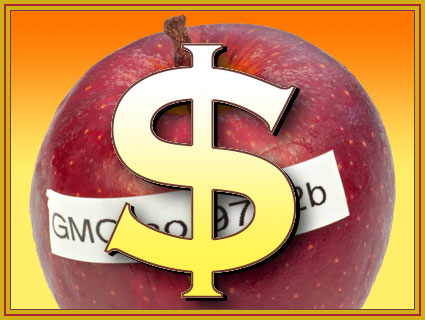
Mechanized agriculture in Tanzania: There are risks that large-scale farming may harm Africa’s fragile environment. Photo by UN/B. Wolff.<a href="http://www.flickr.com/photos/africa-renewal/5102656413/">Africa Renewal</a>/Flickr
Since the 2007 food price crisis, a growing number of US investment funds have been buying up swaths of farm land around the world in anticipation of a rising demand for food and fuels to support the ever-growing global population. My colleague Tom Philpott has written about this increasingly common trend of land grabs—”grabs,” because the lion’s share of these investments seem designed to produce crops for export, pushing out small farmers in the process.
A 2010 Organisation for Economic Cooperation and Development paper estimated that about $14 billion in private capital is committed to farm land around the world, as well as related infrastructure projects like crop storage, processing plants, and transportation. That figure is likely to double or triple by 2015, according to the International Institute for Environment and Development. IIED counts 190 private equity firms currently investing in agriculture and farm land in Africa, South America, Eastern Europe, and elsewhere around the world (PDF). But publicly available details about these firms, particularly those based in the US, are few and far between. Why?
A new report shines some light on the notoriously opaque private investment universe. Published yesterday by the think tank Oakland Institute, the report highlights a sample-size group of 23 private equity funds, university endowments, pension funds, and hedge funds including big names like UBS, Soros Fund Management, Global Environment Fund, Prudential, TIAA-CREF, Harvard University’s endowment, as well as lesser-known heavy weights like Herakles Capital/Agriculture and Pharos Financial Group.
As the Oakland Institute describes it, these investment funds seem to look at farm lands the same way they would stocks, as little more than profit opportunities:
For the most part, their projections emphasize growing populations, growing demands for grains or fuel, or changing economic cycles and the need for wealthy investors to reap the benefits of declining resources. Their investment thesis relies on securing and consolidating already productive and well-watered pieces of land at the lowest cost possible, and making a profit from land appreciation and most likely land transformation/conversion. Once these lands are secured through ownership transfers, longterm leases, or local partnerships, fund managers seek to scale agricultural operations up by leveraging agricultural inputs (e.g. genetically engineered seeds, fertilizers, agricultural chemicals, machinery) and water resources. The end objective is almost always to primarily serve global markets, and not domestic ones.
Overall, the report—based on interviews with the some of the companies (the vast majority never responded to the Oakland Institute) and a review of company websites, media reports, research papers, and government documents—reveals “a secluded and highly unregulated form of investment” that seeks to gain control of private land and farms, “resell them at a superior market return…and/or generate cash from rents.”
Most of the investment funds profiled in the report publicize vaguely-worded sustainability and social responsibility policies. But when the Oakland Institute asked to specify what those policies look like, the group says, many shied away from details. Some of the funds explicitly promote growing genetically modified crops. In at least a few cases, the report finds, the funds partner with food and agriculture giants like Monsanto, Cargill, and DuPont, and not exactly by coincidence. Among the investment fund managers listed in the report are former executives and traders at Monsanto and Cargill. Cargill has two of its own private investment firms. Many of the companies, the report adds, have similarly close ties with big banks such as Goldman Sachs, Credit Suisse, and Deutsche Bank.
But the report’s most troubling finding is that it’s impossible to know the true impact of these investments, whether financial, social, or environmental, because information about them is so scarce. “There remains a critical lack of understanding about how investments are implemented on the ground, and the reluctance of fund managers to disclose basic information including their environmental policy or indicators raises concerns regarding their actual practices,” the report says.
Last year, the Securities and Exchange Commission and the Commodity Futures Trading Commission introduced new requirements for financial advisers registered with the SEC to report to the Financial Stability Oversight Council, a new body created by the Dodd-Frank Act. But virtually none of that information is made available to the public, according to the Oakland Institute’s findings.
What compounds this lack of transparency, the report states, is the fact that the investments funds operate through “onshore and offshore partnerships” even while based in the US, “typically located in the tax havens of Delaware and the Caribbean Islands.”
This has made it “extremely difficult for concerned citizens, students, teachers, and others to find out about agricultural funds,” the report adds. “Even asset owners often claim to not know or understand the underlying holdings of their funds.”
Here’s a more detailed look at five of the most notable investment funds in the report:
- The Teachers Insurance and Annuity Association-College Retirement Equities Fund, more commonly known as TIAA-CREF, is the one of the largest US pension funds out there, serving about 4 million people in government and non-profit. It manages around $487 billion in assets, $2.5 billion of which goes to farm land in the US, Australia, South America, and Eastern Europe. Altogether, TIAA-CREF claims to manage about 600,000 acres of land, roughly twice the size of Los Angeles. The company did not respond to OI for comment, “despite repeated requests.” The report states that the company’s joint venture in Brazil, RADAR, appears to be more about land speculation than sustaining soils for farming, quoting the company’s website: “After reaching a level of appreciation deemed satisfactory, the properties are put up for sale.”
- Soros Fund Management: In 2009, investor and Soros’s former business partner Jim Rogers* said he was “convinced that farmland is going to be one of the best investments of our time.” As of 2011 Soros Fund Management had a 21 percent stake in Adecoagro SA, one of the largest agricultural companies in Argentina, Brazil, and Uruguay. The Soros Economic Development Fund, meanwhile, launched the West Africa Agricultural Investment Fund in 2010 with the Lundin Foundation and Alliance for a Green Revolution in Africa, which has promoted the use of GMO crops on the continent.
- Harvard Management Company oversees the university’s $32 billion endowment and related financial assets. Under the fund’s CEO, Jane Mendillo, according to the report, Harvard’s holdings of forests, farms, and other natural resources in Brazil, New Zealand, and Romania make up about 10 percent of its portfolio, worth more than $3 billion. Harvard’s endowment “has been eyeing timberland, farmland, infrastructure, energy, and water-related investments in anticipation of growing global demand,” the report says, citing Mendillo.
- Farm Lands of Africa Limited controls about 250,000 acres of “underutilized West African agricultural land,” the report states, citing company press releases. FLA was born out of a reverse merger between Farm Lands of Guinea, a business incorporated in the British Virgin Islands, and Kryptic Entertainment, an Internet game development and sales company founded in Las Vegas. In response to the Oakland Institute’s questions, Nigel Woodhouse, an FLA director, said the fund was negotiating a land deal with Guinea’s Ministry of Agriculture to secure about 3,000 acres of land, the bulk of which is to grow genetically modified soy beans. “The issues of consumer choice (to eat or not to eat GM) is a luxury Africa can ill afford in times of inadequate food security,” he wrote in an email to the report’s researchers. “That the farmer is locked into a Monsanto-type company is unfortunate for him, in this case FLA. the people in Central Guinea do not grow soy, and so the issues of cross-contamination do not apply to FLA.”
- Altima spun from an equity arm of Deutsche Bank in 2004 and today is run by former Deutsche executives. Has about $850 million invested in agriculture, making up about 40 percent of its assets. Its portfolio includes Guatemala-based El Tejar, a major agricultural and livestock company. (The other 60 percent of Altima assets are held in oil, gas, and transportations investments in Russia, according to the report.) “Altima Fund portfolio companies plan to harvest 2.5 million acres in South America, Central and Eastern Europe, Australia, and Africa,” the report states. What’s driving the investments? The answer might be found in something Altima partner Joseph Carvin told a group of investors in 2009: “My boss wants to create the first Exxon Mobil of the farming sector.”
Correction: An earlier version of this post misidentified George Soros as the speaker of this quote.












